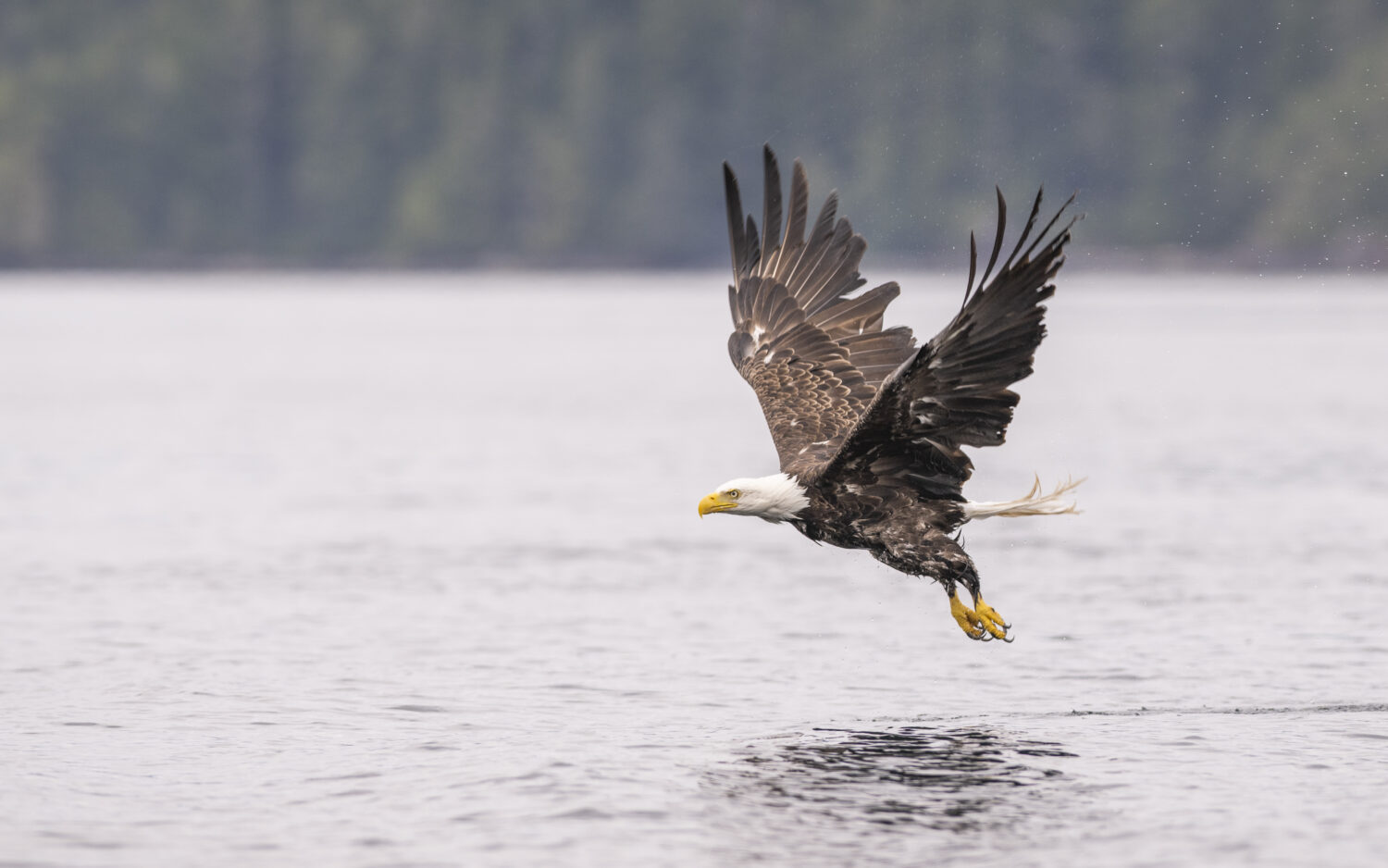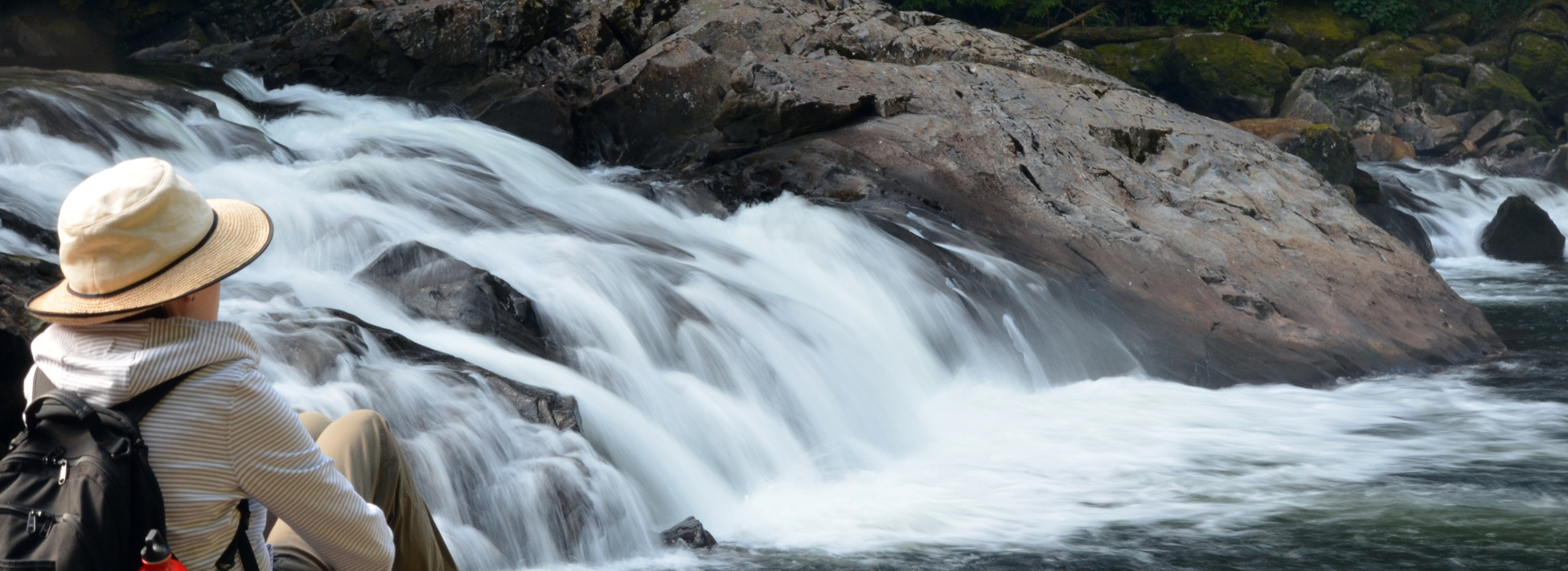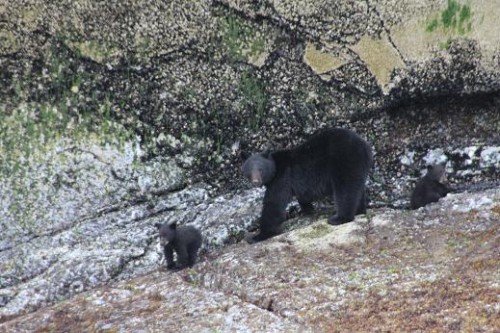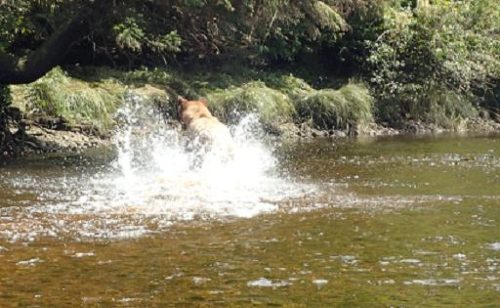
Bald Eagles are frequently sighted in our area. At times they can be seen in large numbers. This is usually where food supplies are high. For example this could be in areas with high concentrations of baitfish or along the rivers in the fall when the salmon are spawning. They are not migratory, but do move around with the food supply. As mentioned earlier when the salmon are spawning we often see many along the rivers, while there will be fewer along the coastline. With little need for camouflage their white head and tail feathers can be spotted easily. The female is slightly larger and her white head extends down a bit farther onto the body, but it is subtle. It takes these birds 4.5 – 5 years to acquire this unique plumage. As juveniles they are a brown colour. With exceptional eyesight and the ability to view 270 degrees they are understandably often seen in high perches and in trees near points and passageways.












 .. went back to fishing and ignored us completely. It never ceases to amaze me how the grizzlies of the Glendale River have accepted our presence and as long as we remain stationary we become part of the background and are not a threat. That does not mean that the pepper spray was not ready to be used. I talked to the guests and the said that they did not feel threatened and that the bear seem calm and deliberate in it’s actions.
.. went back to fishing and ignored us completely. It never ceases to amaze me how the grizzlies of the Glendale River have accepted our presence and as long as we remain stationary we become part of the background and are not a threat. That does not mean that the pepper spray was not ready to be used. I talked to the guests and the said that they did not feel threatened and that the bear seem calm and deliberate in it’s actions. Suddenly she stops and looks toward us. The problem is that she is less than 25 meters (yards) from where I am sitting on the bow of the skiff and I had stood up and started to move the skiff backward to give her more room to fish. Wrong move on my part. She froze looking at me so I sat down and she…
Suddenly she stops and looks toward us. The problem is that she is less than 25 meters (yards) from where I am sitting on the bow of the skiff and I had stood up and started to move the skiff backward to give her more room to fish. Wrong move on my part. She froze looking at me so I sat down and she…